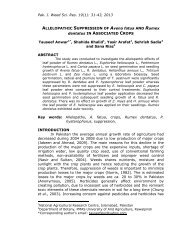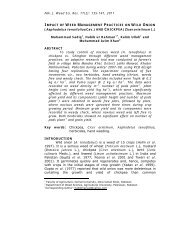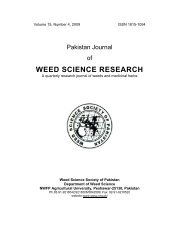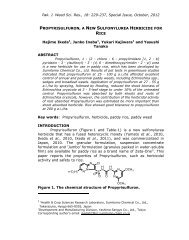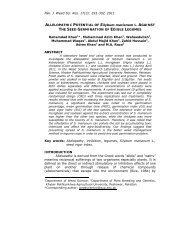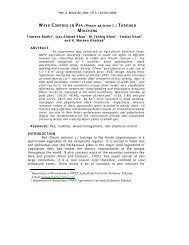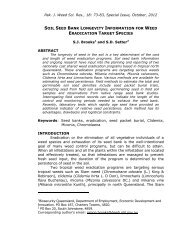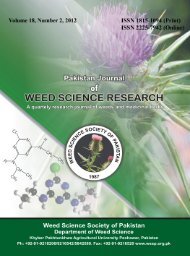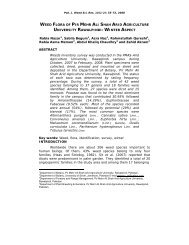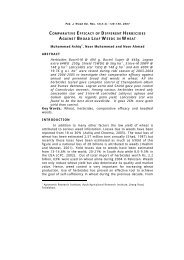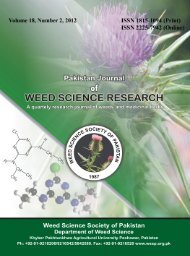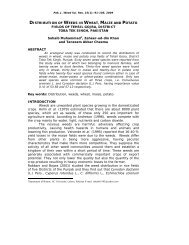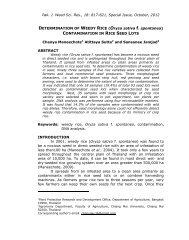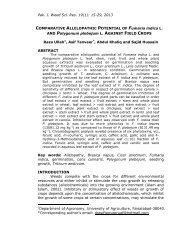A PHYTOSOCIOLOGICAL STUDY OF WEED FLORA ... - Wssp.org.pk
A PHYTOSOCIOLOGICAL STUDY OF WEED FLORA ... - Wssp.org.pk
A PHYTOSOCIOLOGICAL STUDY OF WEED FLORA ... - Wssp.org.pk
Create successful ePaper yourself
Turn your PDF publications into a flip-book with our unique Google optimized e-Paper software.
84<br />
Olugbenga Ebenezer Ige et al. A phytosociological study…<br />
Table-1. Weed families recorded in the three study sites.<br />
S.No. Family Number of species<br />
1. Asteraceae 6<br />
2. Amaranthaceae 3<br />
3 Apocynaceae 3<br />
4. Annonaceae 2<br />
5. Arecaceae 1<br />
6. Combretaceae 2<br />
7. Commelinaceae 2<br />
8. Cucurbitaceae 4<br />
9. Convolvulaeae 3<br />
10. Cyperaceae 4<br />
11 Euphorbiaceae 9<br />
12. Liliaceae 1<br />
13. Loganiaceae 2<br />
14. Malvaceae 4<br />
15. Olacaceae 2<br />
16. Potulacaceae 1<br />
17. Poaceae 11<br />
18. Rubiaceae 5<br />
19. Solanaceae 4<br />
20. Tiliaceae 1<br />
21. Zingiberaceae 1<br />
In site B (Isuada), 49 weed species belonging to 20 different<br />
families were recorded. In this community C. odorata, T. procumbens<br />
and I. cylindrica were also the most abundant with IVI values of 18.2,<br />
14.4 and 16.0, respectively. The ten most dominant weed species at<br />
the locality under reference are presented in Table-3. This community<br />
could also be described as Chromolaena – Tridax – Imperata<br />
community.<br />
In site C (Emure-Ile), 39 weed species belonging to 19 different<br />
families were present. In this community C. odorata, T. procumbens<br />
and I. cylindrica were also the most predominant with IVI values of<br />
17.2, 16.3 and 16.3, respectively. This community could also be<br />
described as Chromoleana – Tridax – Imperata community. Table-4<br />
shows the ten most dominant species.<br />
The families with the highest number of weeds include the<br />
Poaceae, Euphorbiaceae and Asteraceae (Table-1). In this study,<br />
herbaceous weeds recorded constitute about 45 species (68%) while<br />
21 (40%) are woody species. The highest number of herbaceous<br />
species were found in the families Rubiaceae and Cyperaceae which<br />
recorded 5 and 4 species, respectively. Next to this are the families<br />
Apocynaceae and Amarathaceae with 3 species each.



